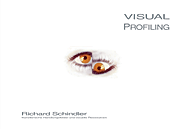| |
|||||||
|
|
|
||||||
| PUBLIKATIONEN Institut for Visual Profiling & Visual Resources Development |
|||||||
| Visual Profiling Fields of Artistic Action and Visual Resources in Corporations, Institutions, and Elsewhere. |
|||||||
 |
Schindler, Richard: Visual Profiling (englisch/german) Jena: IKS Garamond, 2001 zahlreiche farbige Abb. ISBN 3-934601-33-2 Ordering from Garamond. |
||||||
|
The more products become similar to one another as a result of high-tech standards in production, the greater the importance of their differences for the market, differences which can be singled out exclusively on a symbolic level. The same applies to corporations: their market success is essentially dependent upon whether and how internal and external corporate communication succeeds. But in the visualizations of brands and corporate conceptions, an unintended and possibly counterproductive structure of meaning materializes as well. The so-called brand and corporate images are indeed images. They can be analyzed in art terms and plausibly reconstructed. These matters are the topic of the book. Artistic experience teaches us that the visible surface of things is their whole truth and conceals nothing. On the basis of various examples, the author Richard Schindler argues the plausibility of the thesis that, beyond intended and unintended visual messages, artifacts have a founding image-based meaning. The text advances reasons for why this meaning is not perceived. Richard Schindler call the art-based procedure
of laying bare visually realized structures of meaning "visual profiling"
(VP). Visual profiling means an expansion of traditional fields
of artistic action, and it aims at a new possibility in the cooperation
of art and economics – beyond sponsoring or art collection on the
part of corporations. VP is a crucial condition for an efficient
and responsible development of visual resources. |
|||||||